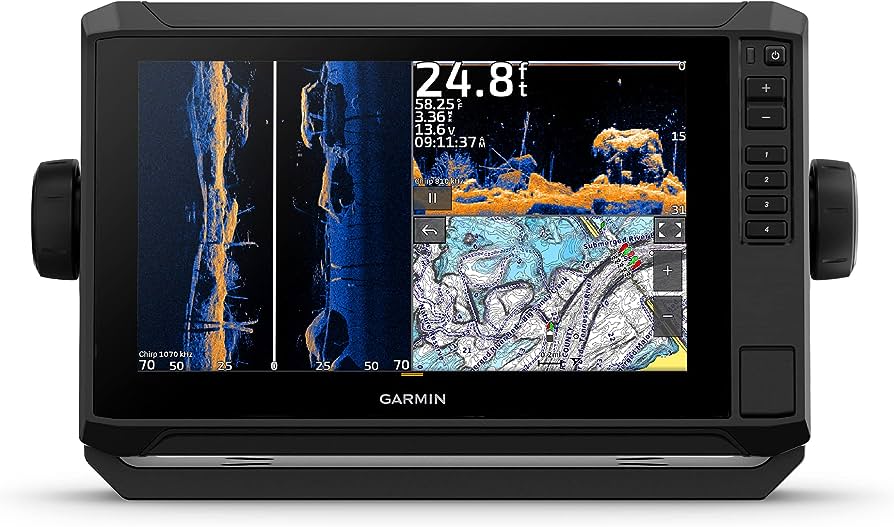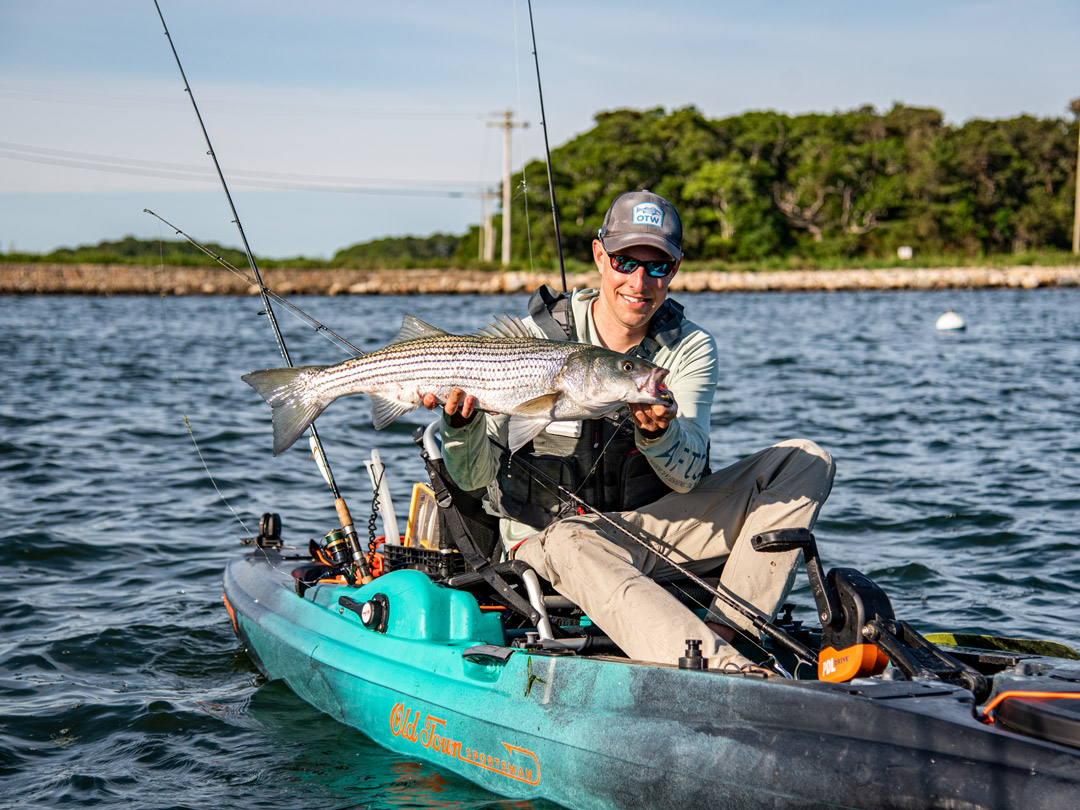Fish finders are an effective tool for structure fishing, helping you locate underwater structures and improve your chances of catching fish. With a fish finder, you can easily identify changes in water depth, locate drop-offs, submerged timber, rock formations, and other structures that attract fish.
This valuable information allows you to target your fishing efforts more accurately and increase your chances of success. By using a fish finder for structure fishing, you can save time and effort by focusing on productive areas instead of aimlessly casting your line.
With the ability to see beneath the surface, you can confidently navigate different water bodies and find the best spots to catch fish. Whether you’re a seasoned angler or a beginner, a fish finder can greatly enhance your fishing experience and increase your chances of a successful day on the water.

Credit: bestboatingtips.com
Understanding The Importance Of Structure Fishing
Understanding the importance of structure fishing is essential for successful fishing. Structure fishing involves targeting specific underwater structures such as rocks, reefs, and submerged trees where fish tend to gather. It is important because these structures provide shelter, food sources, and a sense of security for fish.
By focusing on these areas, anglers increase their chances of catching fish. One effective tool for structure fishing is a fish finder. This device uses sonar technology to locate underwater structures and display them on a screen. It helps anglers identify the exact location of fish, enabling them to target their efforts more precisely.
Using a fish finder for structure fishing provides several benefits including saving time, maximizing catch rates, and improving overall fishing success. It allows anglers to make informed decisions based on real-time information, increasing their chances of a successful outing.
What Is A Fish Finder?
A fish finder is an essential tool for structure fishing, helping you locate fish underwater. It provides a visual representation of the underwater environment, showing you where fish are hiding. This technology relies on sonar to create detailed images of the water column and the bottom structure.
The key features of fish finders include a transducer, which emits and receives sonar signals, and a display screen that shows the information gathered. Different types of fish finders are available in the market, including standalone units and ones that can be integrated with other devices like GPS.
Standalone fish finders are portable and versatile, while integrated units offer more functionality. Whether you’re a recreational angler or a professional, using a fish finder can greatly enhance your fishing experience by increasing your chances of finding and catching fish.
The Role Of Fish Finders In Structure Fishing
Fish finders are valuable tools for structure fishing. These devices use various functions and technologies to locate underwater structures, making it easier for anglers to find fish. By providing real-time sonar imaging, fish finders can display the contours of the waterbed, highlighting potential hiding spots for fish.
They can also measure the depth of the water, helping fishermen identify drop-offs and ledges that attract fish. Additionally, some fish finders can detect underwater vegetation and even distinguish between different types of structure, such as rocks, logs, or brush piles.
Using a fish finder can greatly enhance your fishing experience by increasing your chances of finding and catching fish. It allows you to fish with more precision and confidence, saving you time and increasing your success on the water.
Understanding Sonar Imaging
Sonar imaging is a crucial aspect of fish finders. It works by emitting sound waves that bounce off underwater objects. These sound waves are then received and processed to create a visual representation of the underwater environment. There are different types of sonar imaging technologies, such as traditional sonar and CHIRP sonar.
Traditional sonar uses a single frequency, while CHIRP sonar emits multiple frequencies for clearer and more detailed images. Sonar imaging helps in identifying underwater structures like rocks, submerged trees, or even schools of fish. By understanding the sonar imaging capabilities of your fish finder, you can effectively locate and target fish in specific areas with underwater structures.
This technology can greatly enhance your fishing experience by providing valuable insights into what lies beneath the surface.
Interpreting Fish Finder Display
The fish finder display screen provides valuable information for interpreting and analyzing sonar readings. Understanding the different types of sonar information displayed on fish finders is essential for successful structure fishing. By studying the display screen, you can identify underwater structures, such as rocks, weeds, and drop-offs, which are likely to attract fish.
The sonar readings on the display screen show the depth of the water, the presence of fish, and even their movement patterns. By analyzing the sonar information, you can determine the best fishing spots and adjust your techniques accordingly. It’s important to pay attention to the shape and size of the fish arches on the display screen, as they indicate the size and species of the fish below.
Additionally, studying the density of the sonar returns can help you determine if the fish are actively feeding or are more sluggish. With practice and experience, you can become proficient at interpreting the fish finder display screen and effectively utilize its information for successful structure fishing.
Optimizing Fish Finder Settings For Structure Fishing
Optimizing your fish finder settings for structure fishing requires adjusting the depth range, sensitivity, and frequency. To achieve optimal results, fine-tuning these settings is crucial. By setting the appropriate depth range, you can target specific structures where fish are likely to be hiding.
Adjusting sensitivity helps in distinguishing between fish and debris, enabling you to focus on potential catches. Experimenting with frequency settings will help you identify the best option for the water conditions you are fishing in. Consider using higher frequencies in shallow waters and lower frequencies for deep waters.
These adjustments will allow your fish finder to accurately locate and display fish, maximizing your chances of success. So, before heading out on your next fishing expedition, take the time to optimize your fish finder settings and increase your chances of a successful catch.
Using Gps And Mapping Features
Using a fish finder with GPS and mapping features can greatly enhance your structure fishing experience. These advanced functionalities allow you to mark hotspots and create your own fishing maps. By utilizing GPS, you can easily navigate to specific structure locations, ensuring that you never miss out on potential fishing spots.
With just a few simple taps on the fish finder’s screen, you can mark the spots where you’ve had successful catches or spotted underwater structures. This enables you to revisit these areas at a later time, increasing your chances of landing more fish.
The mapping features also allow you to create detailed records of your fishing trips, which can be invaluable for future reference and planning. Whether you are a beginner or an experienced angler, incorporating GPS and mapping features into your fishing routine can lead to more productive and enjoyable fishing sessions.
Targeting Fish In Structures
Understanding fish behavior within structures is crucial for successful fishing. By knowing how fish relate to different structures, such as reefs, weed beds, or submerged logs, you can effectively target them. Adjusting your fishing approach based on the structure type is equally important.
For example, when fishing near a reef, using a fish finder can help you locate the exact spot where fish are hiding and determine their depth. On the other hand, when fishing in weedy areas, using weedless lures can prevent snagging and increase your chances of catching fish.
By adapting your techniques to the specific structure you are fishing, you can optimize your chances of success. So, next time you hit the water, keep in mind the significance of understanding fish behavior and adjusting your approach accordingly to catch more fish.
Fishing Strategies For Different Types Of Structures
Fishing strategies for different types of structures involve discussing techniques and strategies for specific structure types. These can include submerged trees, rock formations, and underwater vegetation. The key is to approach and navigate each structure effectively. Understanding the structure’s layout and the fish species that inhabit it is crucial.
Use the right lures and baits that mimic the natural prey found in those structures to increase your chances of success. By adapting your fishing techniques to suit each structure type, you can maximize your catch and have a more rewarding fishing experience.
Frequently Asked Questions For Use Fish Finder For Structure Fishing
How Does A Fish Finder Work?
A fish finder uses sonar technology to send sound waves into the water. These waves bounce off objects, such as fish and structures, and are then picked up by the device. The fish finder analyzes the information and displays it on a screen, allowing you to locate fish and underwater structures.
Why Is Structure Fishing Important?
Structure fishing is important because it helps you find areas where fish are likely to hide and feed. Fish are attracted to structures such as rocks, reefs, and submerged vegetation, as these provide shelter and food sources. By using a fish finder to locate these structures, you increase your chances of catching more fish.
What Are The Benefits Of Using A Fish Finder?
Using a fish finder has several benefits. It allows you to locate fish and underwater structures quickly and accurately, saving you time and increasing your chances of success. It also helps you understand the underwater topography, water depth, and temperature, which can further enhance your fishing strategy and improve your overall fishing experience.
Conclusion
Using a fish finder for structure fishing can greatly enhance your fishing experience. By being able to identify underwater structures, you can locate fish more efficiently and increase your chances of a successful catch. The advanced technology of fish finders allows you to see exactly where the fish are hiding, whether it’s a submerged log, a drop-off, or a hidden ledge.
This knowledge gives you a distinct advantage and allows you to strategically position yourself for optimal casting and bait placement. Moreover, the real-time sonar imaging and depth readings provided by fish finders ensure that you are always aware of the underwater terrain and can adjust your fishing techniques accordingly.
So, if you want to take your fishing game to the next level, investing in a fish finder is definitely a smart move. Happy fishing!





